
Focus on Chimps

Wildlife Photography Workshop Among Ecotourism Opportunities at Project Chimps Sanctuary
On a beautiful October day, Pittsburgh resident Annemarie Hoffman spotted a large, male chimpanzee through her camera lens. She wasn’t at the Pittsburgh Zoo, which is home to many majestic gorillas. She was at an all-day photography workshop at Project Chimps, in the Blue Ridge Mountains of north Georgia.
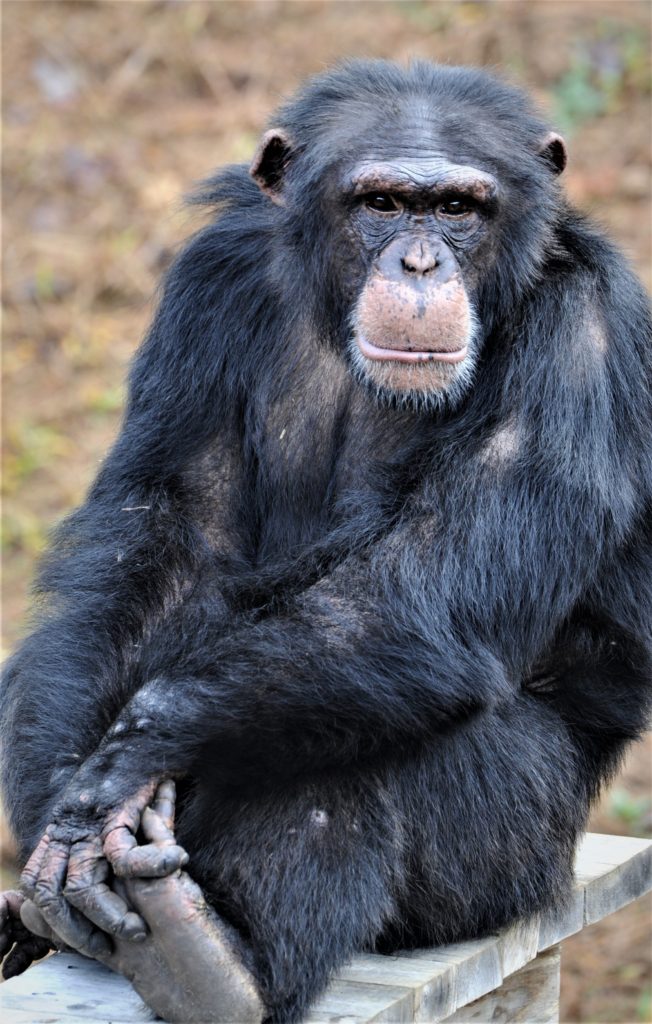
Chimpanzees in north Georgia?
Annemarie and seven other amateur and professional photographers from across the country had gathered for a unique, one-day photography workshop at Project Chimps, a 236-acre sanctuary for chimpanzees retired from medical research.
Annemarie is an active and enthusiastic participant in the growing eco-tourism trend in which travelers visit scenic natural environments, environmental conservations projects, and wildlife preserves throughout the world.
Sanctuary offers varied eco-tourism programs
Project Chimps, a non-profit organization that now cares for 79 former research chimps at its forested sanctuary, hosts a number of ecotourism programs for visiting adults and children. Each program offers a unique behind-the-scenes look at the sanctuary, which is only rarely open to the general public.
The programs range from week-long volunteer vacations for small groups of people who want to roll up their sleeves and give back. “Chimpcation” happens five times a year. Two “Spring Brachiate” weeks in March are designed especially for college students.
Photography workshop begins
On this crisp fall morning, Annemarie and her photography classmates arrived bright and early at the sanctuary for their opportunity to photograph chimpanzees under the guidance of Crystal Alba, a wildlife photographer and Project Chimps veterinary assistant, and Joan Miller, an experienced wildlife photographer and sanctuary volunteer.
The workshop was the first of its kind for the sanctuary and for most of the participants.
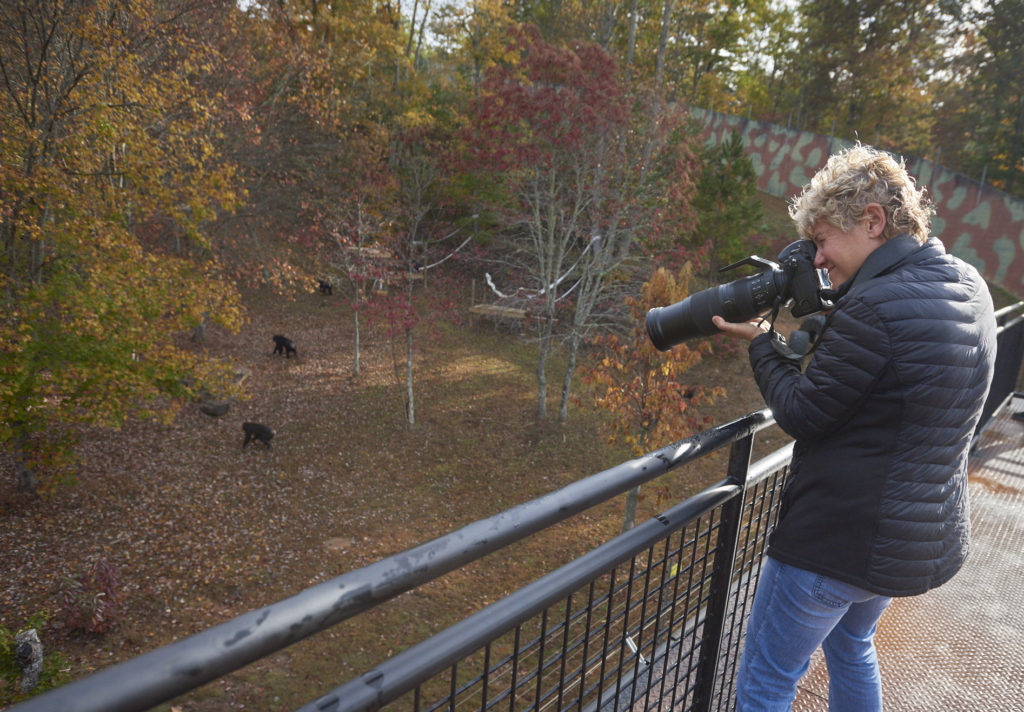
The group met their instructors the night before the workshop at a private wine and cheese reception in the nearby town of Blue Ridge, a scenic mountain hamlet known for its charming, historic main street.
The next morning, coffee in hand, the photographers gathered as Crystal described which chimpanzees would be out in the sanctuary’s 6-acre, open air habitat and the various vantage points they’d use to observe and photograph the chimps.
Focus on the chimps
Crystal reinforced what the participants already knew: that there would be no human-chimpanzee contact, just safe observation and photography from atop balconies and through thick, chimp-proof windows.
Crystal also explained that the chimpanzees’ walled habitat was divided into two, 3-acre subsections and that the photographers would have the chance to take pictures of two different groups of chimps that day. Marlon and his group of 16 male and female chimpanzees would be out in the north yard, while Hercules and his group of 14 chimps would be out in the south.
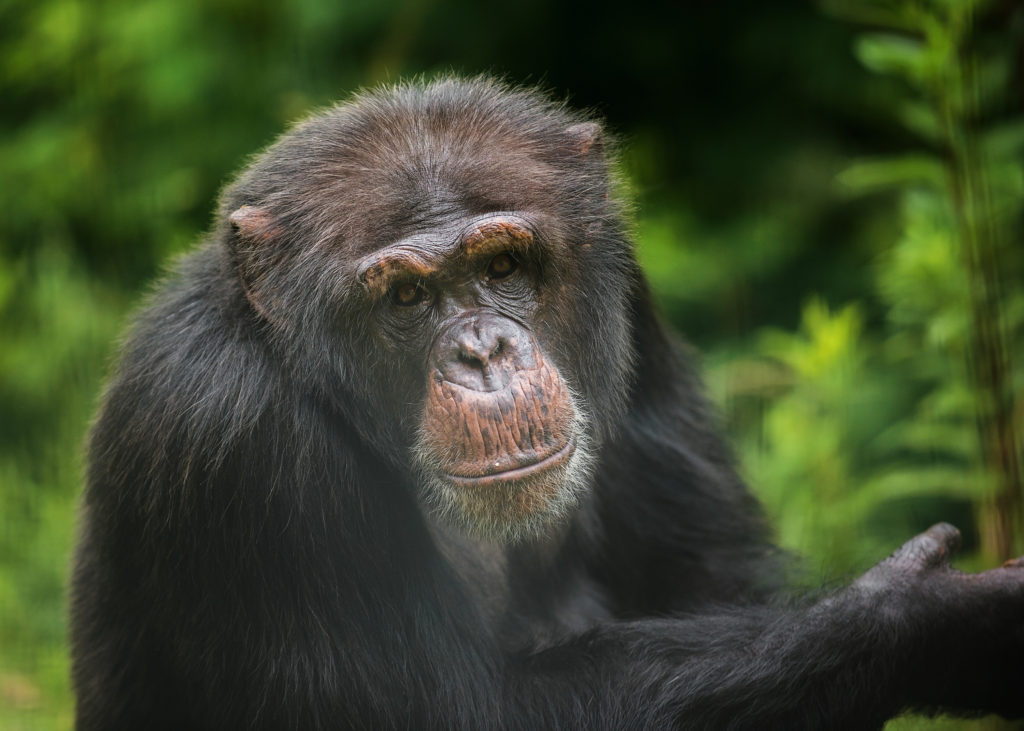
VIP access
Crystal guided the group to a behind-the-scenes vantage point – a platform overlook above the forested habitat. Hercules and his group were outdoors, roaming the forest and taking full advantage of the fine weather. For chimps like Hercules, the forest is a vastly different environment than the ones in which they were raised.
Hercules and his former research companion Leo were once confined to a basement laboratory in New York, where they were forced to walk upright with electrodes embedded into their muscles. From the age of two, they were walked back and forth so scientists could study locomotion.
After research ended on chimpanzees in 2015, animal rights advocates, including Dr. Jane Goodall, fought for their release to sanctuary. Today, Hercules and Leo both live at Project Chimps and spend their days exploring, playing and foraging indoors and out.
Annemarie focused in on Hercules and Leo and clicked away.
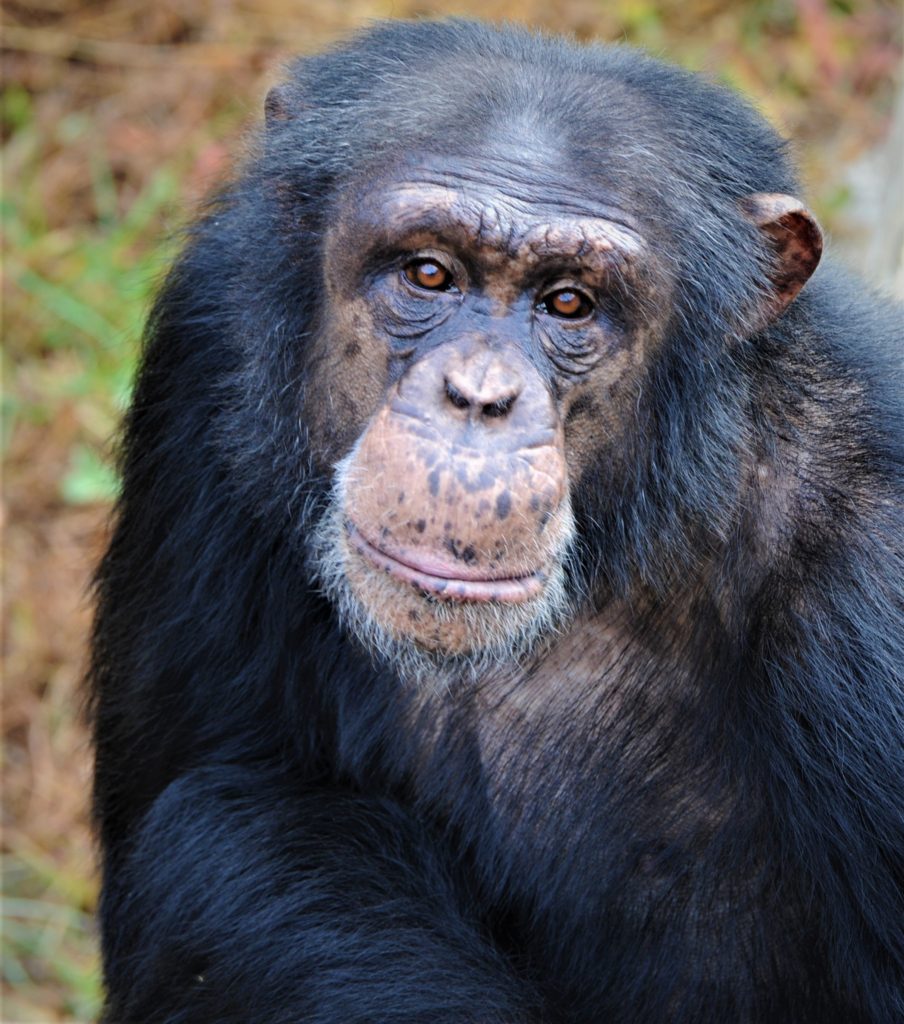
Meeting Hercules
For Annemarie, it was a moment she’d looked forward to since first seeing Hercules on her computer screen in Pittsburgh.
“I was so excited to see Hercules in person,” said Annemarie, adding, “I developed a strong connection with him after learning his story on Project Chimps’ YouTube channel.”
Annemarie also enjoyed photographing Lucky, who has a very distinctive face due to a skin condition known as vitiligo.
“They said she was shy, but she really came out of her shell when our group was present,” she said.

Chimpanzees and other animals react the way most humans would if a stranger were to walk up and point a camera at their face. They turn away.
Building trust with wildlife
The key to photographing wildlife, according to Project Chimps’ Crystal Alba, is patience.
“At the beginning of the day, I told everyone that the goal is to capture the right moment, not necessarily getting a technically good photo,” Crystal said. “You just want something that helps an audience connect with the chimps.”
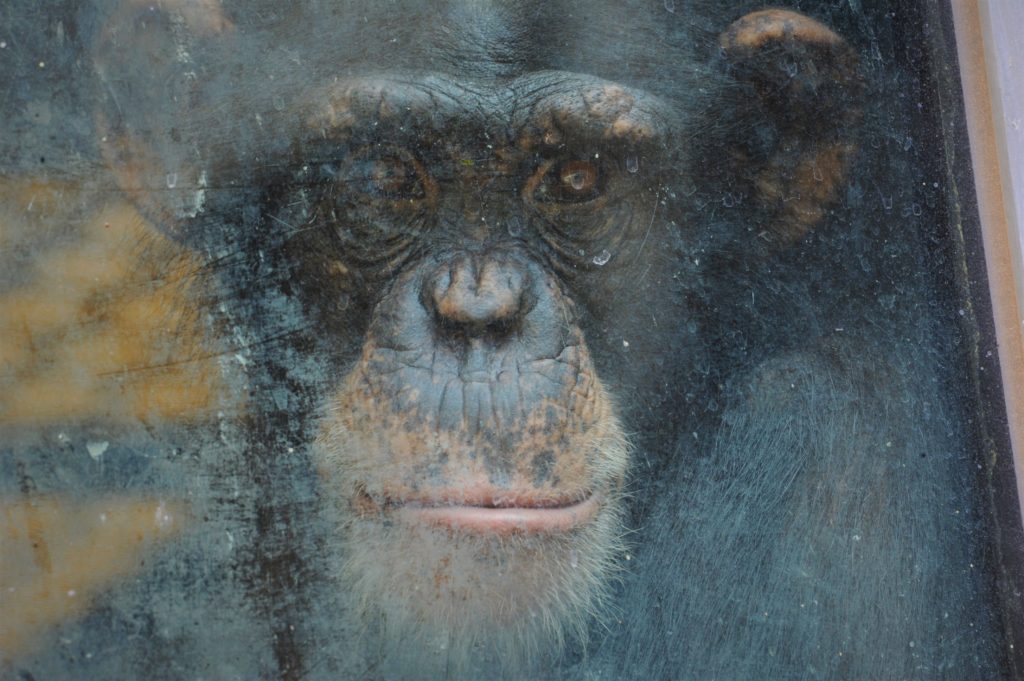
Crystal was impressed with the photos taken by the workshop participants, who had a wide range of previous experience. Some guests brought full bags of Nikon and Canon gear and long telephoto lenses, while others captured stunning photos using the enhanced camera features of the latest iPhone.
“What really stood out to me was how much passion the participants had for the chimps and their strong desire to get a portrait that reflected the chimp’s personalities. They had so many great questions about the chimps as individuals…not just questions related to photography. Connecting with the chimps at that level is what makes for a good portrait,” added Crystal.
Behind-the-scenes tour
After a busy morning of photography, the participants enjoyed a mid-day break including a tasty vegan lunch served at the 19th century homestead cabin on sanctuary grounds. Then, they were off on a guided walking tour of the sanctuary with opportunities to interact with the curious chimps through eight viewing windows.
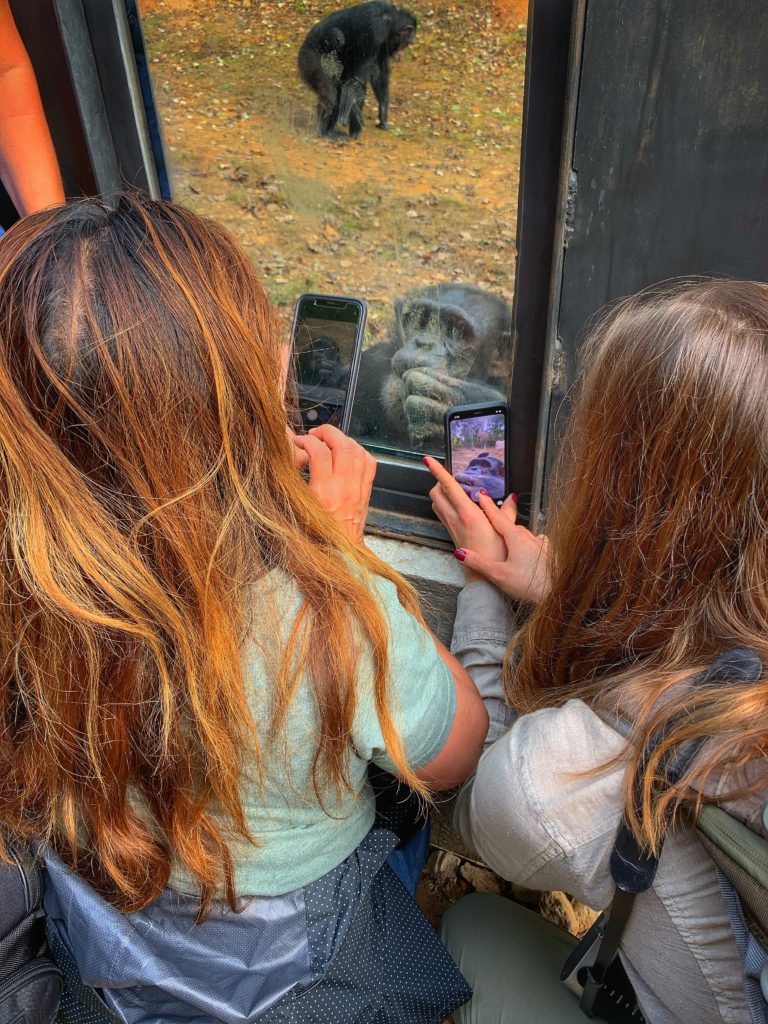
Saying farewell
At the end of the afternoon, everyone gathered for cool refreshments at the picnic tables outside the chimpanzee habitat.
The participants expressed their gratitude and enthusiasm for the one-day experience, saying they wished they could spend even more time with the chimps and their new workshop friends.
“It was a great opportunity to passively observe and photograph chimps in their sanctuary environment and to have so many different interactions from the different vantage points,” said Annemarie.

Photography workshop co-host Joan Miller agreed:
“It was wonderful to see such an enthusiastic and talented group of people sharing their passion for photography at Project Chimps.”
Project Chimps plans to repeat the photography workshop. For upcoming dates and to register, click here. If you would like to read more about techniques for photographing chimpanzees and wildlife, you can read Crystal’s in-depth blog post here.
Though Project Chimps is not open daily to the public, there are many other ways to visit, including 2-hour tours through Airbnb Experiences, ticketed public open house events like Discovery Days, Chimps Rock! and Chimp-or-Treat; and weeklong volunteer vacations mentioned previously like Chimpcation, for adults, and Spring Brachiate, for college students.
Well worth the trip
Seeing chimpanzees in a sanctuary setting is a transformative experience for people of all ages.
“It was well worth the travel for this unique opportunity,” added Annemarie as she packed her camera equipment and the memories of a lifetime and headed back to Pittsburgh.
For more information about visiting the sanctuary and supporting the chimps, visit projectchimps.org
